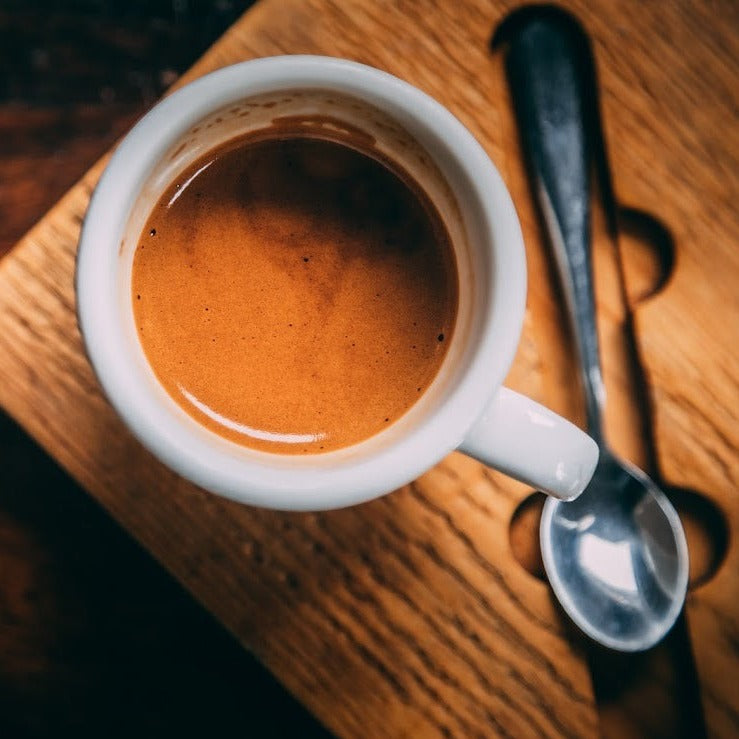Everything You Should Know Before Buying SOE Single Origin Espresso
Everything You Should Know Before Buying SOE Single Origin Espresso
Blog Article
Coffee Beans Uncovered: Finding the Tricks of Coffee and Blended Coffee Beans
When you assume concerning coffee, what comes to mind? Is it the abundant scent of coffee or the intricacy of a well-crafted mix? Understanding the subtleties of coffee beans can transform your experience.
The Beginnings of Coffee: A Historical Perspective
Although coffee is currently a staple in coffee society worldwide, its beginnings trace back to the early 20th century in Italy. You could be stunned to learn that the development of coffee was driven by a need for rate and effectiveness. In 1901, Luigi Bezzera patented the very first espresso maker, intending to brew coffee faster than traditional techniques. This innovation rapidly recorded the interest of Italian coffee drinkers, leading to the espresso bars we know with today.
Understanding Espresso Beans: Attributes and ranges
When you think about espresso, it's important to identify the various bean varieties and their unique tastes. Each type brings an unique personality to your cup, influenced by variables like roast degrees. Understanding these elements can boost your coffee experience considerably.
Espresso Bean Varieties
As you check out the world of coffee, you'll swiftly find that not all beans are created equivalent; each range brings its own distinct tastes and attributes to your cup. The most popular types consist of Arabica and Robusta. Arabica beans are understood for their smooth, nuanced flavors and lower high levels of caffeine content, making them a favorite among coffee connoisseurs. On the other hand, Robusta beans pack a more powerful punch with greater high levels of caffeine and a more bitter preference, often favored in blends for their crema-enhancing top qualities. You may also encounter specialty beans like Liberica and Excelsa, which offer distinct accounts and are much less common. Each range offers something various, so experimenting will certainly help you find your excellent coffee.
Taste Profiles Clarified
Comprehending the flavor accounts of different espresso beans can elevate your coffee experience. Each bean variety provides special characteristics that influence fragrance, mouthfeel, and preference. Arabica beans typically offer a sweeter, extra complicated taste with hints of fruit and floral notes, while Robusta beans often tend to be bolder, with nutty and natural undertones.
When you discover single-origin beans, you may discover distinctive regional flavors-- Main American beans might be citrusy and brilliant, whereas Italian blends commonly provide abundant, chocolatey notes.
Roast Levels Influence
Roast degrees play a vital role fit the flavor and fragrance of coffee beans, influencing your general coffee experience. With light roasts, you'll uncover bright acidity and much more obvious fruity notes. As you transfer to tool roasts, you'll delight in a balanced account that showcases sweet taste and intricacy. Dark roasts, on the various other hand, frequently existing abundant, strong tastes with a smoky finish, however they can mask the beans' fundamental attributes. Comprehending these roast degrees helps you select the espresso that fits your taste preferences. Try out various roasts can cause wonderful explorations, enhancing your recognition for espresso. So, do not think twice to explore different roast levels and find your ideal cup!
The Art of Mixing: What Makes Blended Coffee Distinct
What makes combined coffee so interesting? You can experiment with numerous mixes to boost sweet taste, level of acidity, and body, resulting in a brew that's richer and extra intricate than a single-origin coffee.
Blending also allows you to satisfy varied preference preferences. You can craft a blend that's smooth and smooth or one that's vibrant and durable, depending on your audience. Plus, mixing can help keep consistency, supplying a trusted flavor experience no matter seasonal variations in beans. Whether you're a home or a barista maker, understanding the art of mixing opens up a globe of imagination and flavor possibilities, making your coffee experience genuinely distinct.
Flavor Accounts: Tasting Notes of Coffee vs. Blended Coffee
Mixed coffee provides a world of taste opportunities, however when it comes to espresso, you're looking at an extra concentrated experience. Espresso usually showcases bold, rich flavors with a thicker mouthfeel.
On the other hand, blended coffee provides an intricate tapestry of flavors. You can explore a variety of sampling notes, from nutty and sweet to flower and fruity. Each mix can provide something one-of-a-kind, commonly combining beans from various areas to create a balanced account.
While coffee supplies a strike, blended coffee welcomes you to appreciate the nuances. Whether you like the robust stamina of espresso or the detailed flavors of blended coffee, each cup informs its own story, awaiting you to uncover.
Brewing Techniques: Developing Your Coffee Shot
To attain the excellent espresso shot, comprehending the brewing methods is crucial, as also minor modifications can substantially impact the flavor and top quality. Begin by making use of fresh, high-grade coffee beans; grind them prior to developing for optimum flavor. Go for a great work, concerning the consistency of table salt, to assure excellent extraction.
Next, pay attention to your water temperature; it needs to be in between 195 ° F to 205 ° F. Too warm or also chilly can destroy your shot. Usage regarding 18-20 grams of coffee for a dual shot, and tamp it evenly with firm pressure to create a consistent puck.
Finally, regulate your extraction time; go for 25-30 secs. A longer removal can cause resentment, while also brief can cause sour flavors. Practice these strategies consistently, and you'll improve your abilities, attaining that abundant, robust espresso shot you long for. Enjoy the journey!
The Duty of Roast Degrees in Espresso and Blended Coffee
After grasping the developing strategies for espresso, it's time to contemplate exactly how roast levels influence the taste account of your coffee. The roast degree can considerably alter your espresso's scent, body, and preference. Light roasts tend to highlight the coffee's origin, providing click intense acidity and fruity notes, while medium roasts equilibrium acidity and sweetness, developing a well-rounded flavor. Dark roasts, on the other hand, bring out bold, abundant tastes with reduced level of acidity, typically creating chocolate or great smoky touches.

Checking Out Sustainability: Moral Sourcing of Coffee Beans
When you choose coffee, you're not just selecting a flavor; you're choosing concerning the effect on farmers and the atmosphere. Understanding Fair Trade practices, chemical-free farming techniques, and accreditation criteria can help you sustain lasting coffee sourcing. Let's discover how these aspects add to a much more honest coffee experience.
Fair Profession Practices
Fair Profession methods play an important duty in making certain that coffee beans are sourced morally and sustainably. When you choose Fair Profession coffee, you support farmers that receive fair incomes and work in secure conditions. By deciding for Fair Profession brand names, you're not simply appreciating an abundant cup of coffee; you're making a favorable impact on the lives of those who grow it.
Natural Farming Techniques
As you discover the world of ethical coffee sourcing, natural farming approaches arise as an essential part of sustainability. By selecting natural coffee, you support practices that focus on soil health, biodiversity, and natural ecosystems. Farmers stay clear of artificial pesticides and fertilizers, depending instead on all-natural compost and plant turning to boost dirt fertility. This not just secures the atmosphere however additionally boosts the top quality of the coffee you delight in. Natural farming encourages local wild animals and advertises a balanced environment, reducing the chances of condition and pests. In addition, it commonly results in more powerful, much healthier coffee plants, leading to richer flavors in your mug. You're making a conscious selection that profits both the earth and your palate. when you choose for natural coffee.
Certification Requirements Explained
Recognizing accreditation requirements is important for anybody interested in fairly sourced coffee. These criteria, such as Fair Trade, Rainforest Alliance, and USDA Organic, assurance that coffee is expanded under lasting techniques. When you select licensed coffee, you sustain farmers that adhere to ethical labor techniques these details and environmental management.
Fair Trade accreditation concentrates on giving fair earnings and working problems, while Jungle Alliance highlights biodiversity and community preservation. Following time you're at your local café or grocery shop, look for these tags, and really feel excellent knowing your coffee acquisition favorably influences areas and the environment.
Frequently Asked Concerns


Exactly How Does Altitude Affect the Growth of Coffee Beans?
Elevation impacts coffee bean growth by affecting temperature level and climate. Greater altitudes frequently create denser beans with more facility flavors, while lower elevations can result in faster growth however less delicious outcomes. You'll taste the difference!
What's the Distinction In Between Arabica and Robusta Beans?
Arabica beans are sweeter and much more intricate, while Robusta beans have a more powerful, harsher taste with greater caffeine web content. You'll find Arabica preferred for specialty coffees, whereas Robusta's usually made use of in instant coffee and espresso blends.
Can Coffee Beans Spoil or Shed Flavor Gradually?
Yes, coffee beans can spoil and shed taste with time. If you store them improperly or keep them too long, they'll wither. Always maintain your beans in a closed container far from light and dampness.
What Are the Health And Wellness Benefits of Drinking Coffee?
Drinking espresso increases your power, enhances psychological quality, and might lower the risk of particular conditions. It's rich in anti-oxidants, sustains metabolism, and can enhance state of mind, making it a helpful choice for your everyday regimen.
How Does Water High Quality Influence Coffee Extraction?
Water top quality considerably influences espresso removal. It impacts the solubility of oils and tastes, affecting preference and scent. Making use of filtered water can boost your coffee, making sure a satisfying and balanced mug every single time you make.
Coffee Beans Uncovered: Discovering the Keys of Espresso and Blended Coffee Beans.
Understanding the taste profiles of different coffee beans can elevate your coffee experience.Roast degrees play a vital view it role in shaping the flavor and fragrance of espresso beans, influencing your overall coffee experience (SOE).Mixed coffee supplies a world of flavor opportunities, however when it comes to coffee, you're looking at a much more focused experience.After understanding the developing strategies for coffee, it's time to ponder just how roast degrees affect the taste profile of your coffee
Report this page